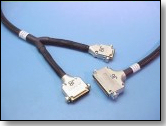There are many different options in gasket materials today. Each different material is designed to work effectively for specific types of applications, industrial uses and for different functions.
In general, neoprene gaskets come in different types for specific use. Neoprene is considered to be good for use with exposure to ozone as well as weather conditions. It can be effective in a wide range of temperatures from minus sixty-five degrees Fahrenheit to plus two hundred and fifty degrees Fahrenheit.
Neoprene itself is most often associated with water resistance. It can also be highly dirt and residue resistant, which is important in many applications. It has moderate resistance to oils and chemicals as well as petroleum products. Neoprene is considered a better option for many types of gaskets that were originally made of either synthetic or natural rubber.
Types
There are different types of neoprene gasket materials. This includes a sponge option, which has individual types of pockets that are ideal for insulation, sound and vibration minimization.
The homogeneous material is more of a general use type of gasket that can be used both inside and outside. This often has a cloth finish or feel and offers the greatest temperature range.
There is also a diaphragm type of neoprene material used in gaskets. This has a good temperature range a well and is oil resistant. It is used to allow pulses between two different mediums on either side of the gasket to go through the material.
It is important to carefully choose the right type of neoprene gaskets for the specific environment and use. While this is a good option for a wide range of applications, including HVAC systems and refrigeration, it is not the optimal choice if the gasket will be exposed to chlorine, most acids, motor oils, acetone, butane or hydrogen peroxide to name just a few of the problematic materials.
